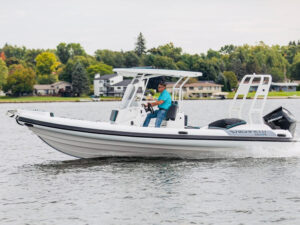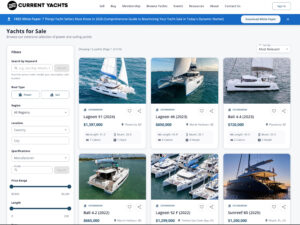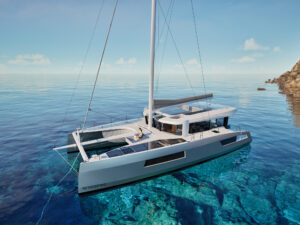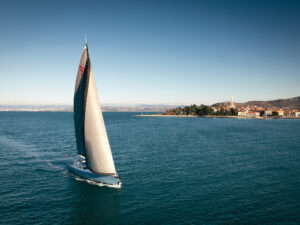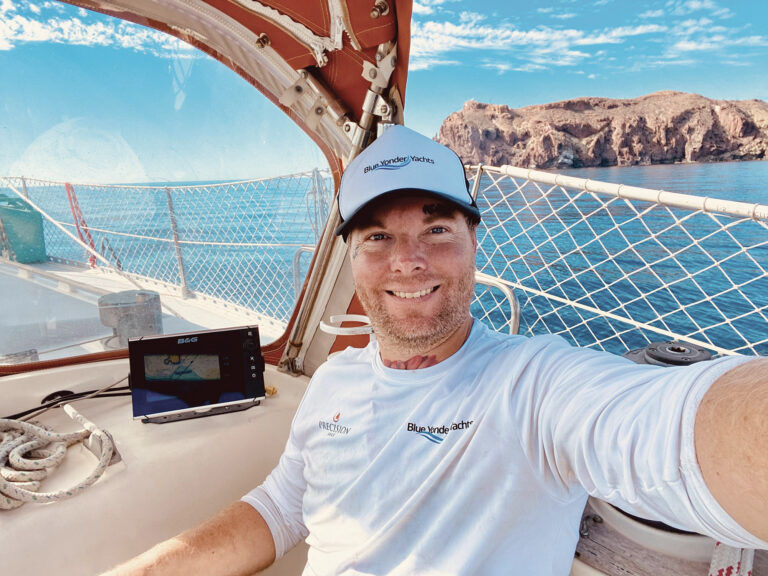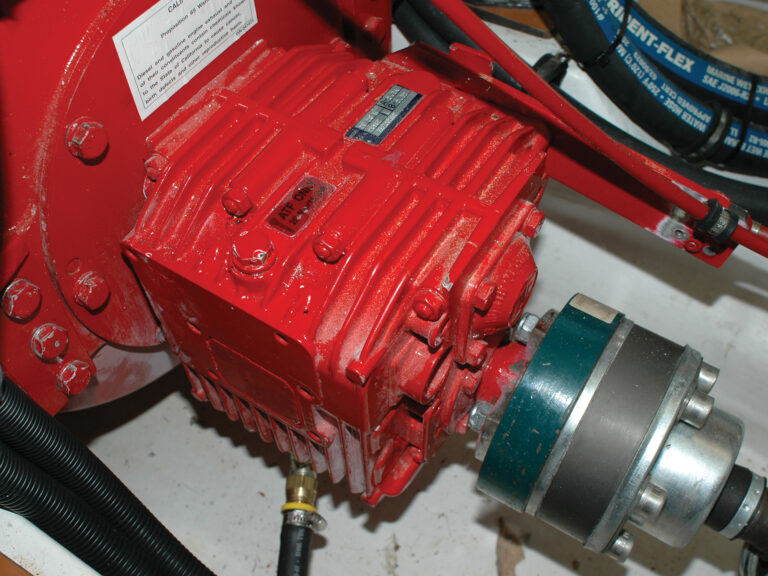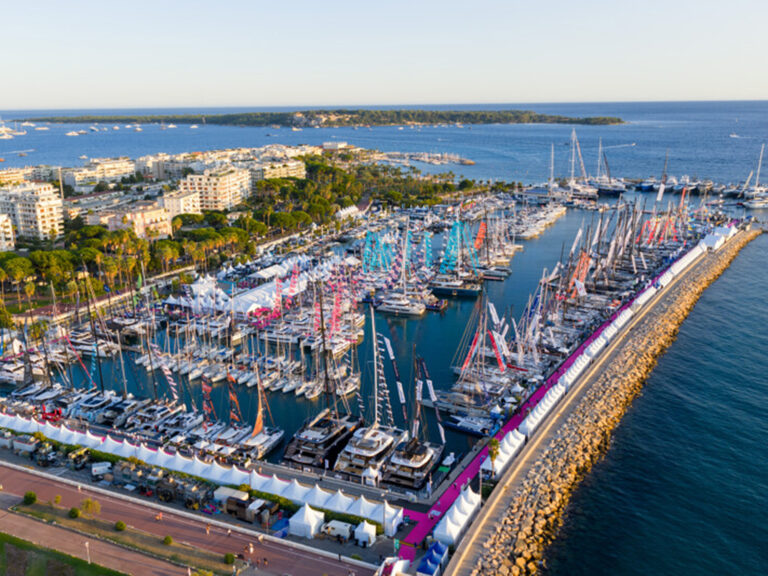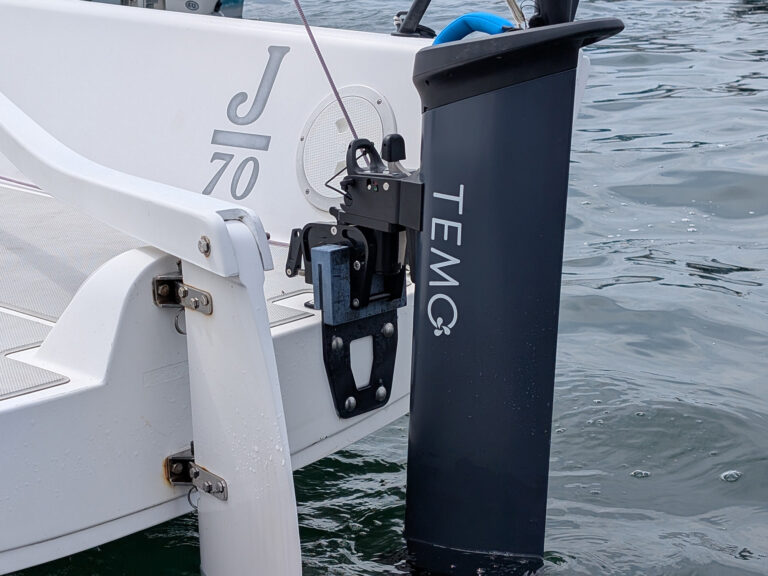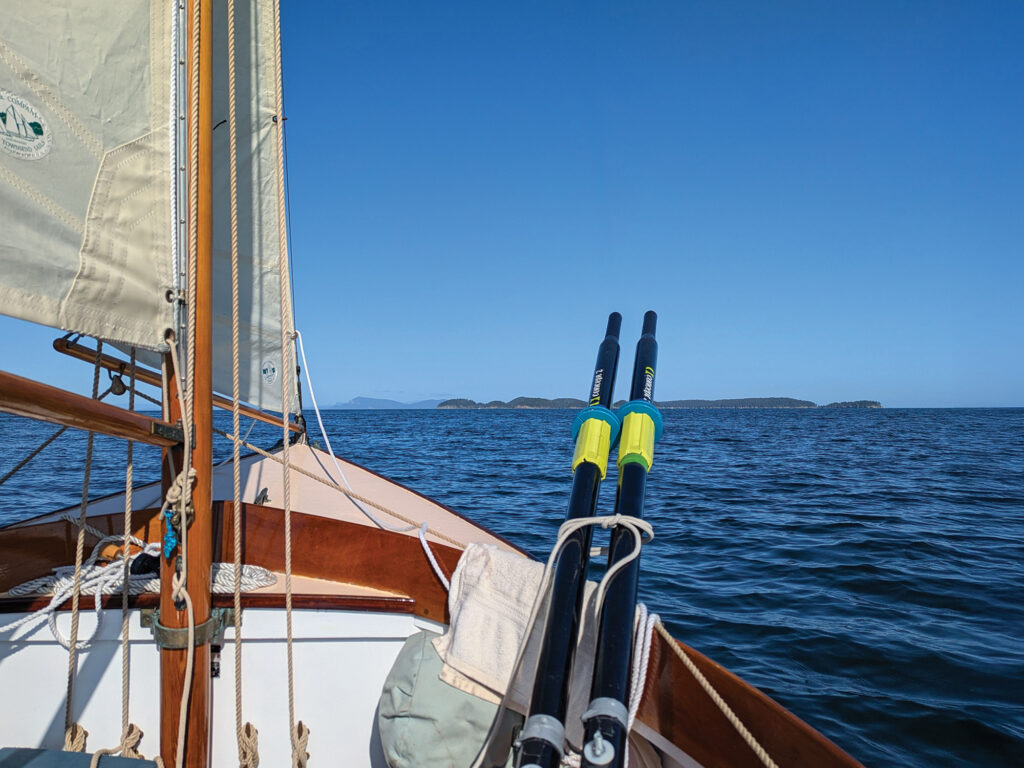
As I pulled on the 11-foot carbon oars under a hot July sun, I reflected on my seeming inability to cross Washington state’s Rosario Strait in a normal fashion. Not two months prior, I had dashed across the 5 nautical miles of open water amid a small-craft advisory, a day when 20-knot gusts and a wind-against-tide sea state had threatened to overhaul Lazydog’s gunwales. Yet here I was, with growing blisters and diminishing daylight, trying my best to crab my way toward Matia Island against the flood tide and a precarious possibility of ending up in the Strait of Georgia.
The launch ramp in Fairhaven, Washington, had been seven hours ago, serving as my starting point for a four-day weekend and a mini cruise in the San Juan Islands. My loosely formed plan was to carve a counterclockwise loop around Lummi Island from Thursday to Sunday, taking advantage of the Cascadia marine-trail campsites. The only monkey wrench would be the wind, fickle as ever during the summer drought, and not forecast at more than 6 knots.
On day one, I aimed to make the 15-nautical-mile passage to Matia Island. Lazydog’s varnished jib club obediently shepherded the beige sail across the foredeck as I played the puffs of wind toward Hale Passage, a milewide hurdle that had to be crossed. As any Bellingham-based sailor will tell you, whatever the wind is in the bay when you set off, Hale Passage and Rosario Strait are guaranteed to have entirely different conditions. Unfortunately for me, this meant that the wind had died. It was time to get rowing.
I assembled the two-part carbon oars, which I MacGyvered to give me a fighting chance of rowing Lazydog’s 1,500-pound displacement, and began plodding north up Hale Passage. The backward view did not disappoint, as Mount Baker and the Sisters range pierced into the blue sky above Bellingham’s patchworked timberland hills.
After about an hour, the wind line more wholly embraced us. Up went the sails, with the Marconi-rigged main sheeted tight to the aft quarter. This felt great, because rowing a sailboat is a lot like hiking a trail with your mountain bike. It’s neat to be outdoors, but it isn’t the reason you left the house. I pressed to windward, lounging on the leeward seat to give Lazydog the heel it appreciates in light winds.

With the flood current carrying us north toward Migley Point, it became obvious that there was not a whisper of a wind in Rosario Strait. It was already 17:00, with sunset in four hours. I could find a nook along the private beaches of Lummi’s eastern shore to anchor for the night, but I would be unable to leave the boat. Alternatively, I could stick to my original plan and row the 5 miles of open water to Matia Island’s eastern cove. I estimated the crossing at three hours, a duration I had not previously attempted. Nevertheless, I decided to bet on the resilience of my 25-year-old back.
Almost immediately, it became clear that the flooding tide would be an issue. It was running at a meager single knot, yet my pace on the oars was only 2.5 knots, and my course over ground was swinging dangerously toward a long night of dodging commercial traffic in the Strait of Georgia. I turned the bow farther south, toward the peak of Mount Constitution on Orcas Island. By keeping the peak on the bow, I arrested my descent down the shipping lane.
For the following two hours, I snacked incessantly to keep my energy up, and I lovingly cultivated the blister farm growing on my palms. I was just about exhausted, but I could see the diminutive cove where I planned to stay the night. The last mile took an hour. As the sun dipped past the Douglas fir trees at the head of the cove, I dropped my stern anchor into 20 feet of refreshingly cold water and stepped ashore to place my second anchor high in the sand.
Up went the sails, with the main sheeted tight to the aft quarter. This felt great, because rowing a sailboat is a lot like hiking a trail with your mountain bike. It’s neat to be outdoors, but it isn’t the reason you left the house.
I sat on the floorboards and stretched out my ravaged hands. Dinner was next on the docket. I gorged on canned soup and homemade focaccia like it was my last supper. Then I pulled Lazydog back to shore and set off down the half-mile path to catch the final sunset rays from Rolfe Cove on Matia’s western side. Sprawled on a picnic-table bench, I watched the sky turn from pink to deep blue.
When I pulled Lazydog out into deeper water to weather the night’s tidal swings, the scattered bioluminescence twinkled all around. It was the height of their season, and in the tranquil water, they dwarfed the stars in number and brilliance. Peering over the gunwale, I watched 6-inch-long fish carve shimmering swaths through the dancing spectacle. Finally, I gave in to exhaustion and nestled my sleeping pad and bag between the centerboard trunk and the hull planks for the night.
The boisterous dawn chorus of robins and chickadees roused me at 5 a.m., but I rolled over and returned to my slumber for two more hours. I hadn’t rigged my boom tarp the night before and was paying for my negligence with a thick layer of dew covering everything. The July sun was my ally, and after an easy breakfast of dehydrated fruit and granola, I pulled Lazydog back to the beach and went for a walk while everything dried out.
Back on the boat a short time later, I waded waist-deep into the clear water to wash away the previous day’s sweat and sunscreen. Drying out in the cockpit, I trained my binoculars out of the cove to see a steady 8 to 10 knots of northwesterly wind rolling small wavelets down Rosario Strait. Because I would have committed unspeakable acts for such conditions the day prior, I resolved not to waste the opportunity and was soon rounding the jumbled rocks of Matia’s southeastern point toward Sucia Island.
White clouds dotted the blue sky overhead as personal watercraft filled in around us. Lazydog and I were battling a slight ebb current, but with such lovely wind, the current proved a nonfactor near the mouth of Fossil Bay. It’s a popular place, but it had been a number of years since I had last walked the trails here, so I joined the inevitable crowds. By the time I had set my anchors and dismounted onto the beach, several folks were waiting to chat with me about Lazydog. Evidently, a varnished 16-foot wooden boat roll-tacking into Fossil Bay was not a daily occurrence. One white-haired gentleman shared his own experiences owning a Doughdish, the fiberglass version of the original Herreshoff 12½ with a full keel. He said that watching me roll through tacks up the bay reminded him that his Doughdish had been the finest boat to sail he’d ever owned.

After returning from my walk, I readjusted Lazydog closer to the beach so that the incoming tide would not force me to swim out to it in deep water later in the day. With the sun high overhead, I spent the rest of the afternoon reading in a hammock strung up on a bluff overlooking Orcas and Waldron islands across the water to the south and west. Some adventurous rowers I had crossed paths with the day prior in Hale Passage had pulled up onto the beach shortly after my own arrival, and as evening fell, I dined with them at their campsite, swapping stories of past trips and comparing blisters. They highly recommended a campsite on the southeastern shore of Lummi Island, but tomorrow’s forecast was an abysmal “wind variable 5 knots or less.” I turned in for the night, unsure of what my next port of call would be.
Once again, the bioluminescence danced around Lazydog, and the Big Dipper and Cassiopeia swung around Polaris overhead. In the trees not 10 feet from where my anchor was set on the beach, a great horned owl whistled for its mate, who came swooping over. I overheard a young parent pointing out the “really cool bird” to a child, who protested, “That’s not a bird, that’s an owl.” My eyes were drooping, but the parent must have been even more exhausted than I was, because the child’s declaration of fact went unchallenged.
Morning broke with an unexpected 10 to 15 knots of wind sweeping over the grassy portage from the northwest and twisting through the jammed mooring buoys in Fossil Bay. Without much idea of how long it would last, I decided to point my bow southwest to see how far it would take me. If conditions softened quickly, Clark Island Marine State Park was an option in Rosario Strait, but if it held on into the afternoon, I had a shot of making the Lummi Cove site that the other rowers had recommended. Also on my mind was the need to return to work in two days’ time—and the fear of a desperate Sunday-night row if I didn’t knock off some miles today.
I horsed down enough breakfast to last me deep into the afternoon and was soon pulling up my anchors and hoisting the beige sails. Flicking the jib club across the foredeck, I ran wing-on-wing downwind through the boats swinging on their moorage balls. Once clear of the bay, I raised the white spinnaker with its varnished 7-foot pole. Lazydog began romping downwind with the following seas at a jovial rate of 5 to 6 knots.
By the time I had set my anchors and dismounted onto the beach, several folks were waiting to chat with me. Evidently, a varnished 16‑foot wooden boat roll‑tacking into Fossil Bay was not a daily occurrence.
This was champagne sailing, although it required diligent work on the helm and leeward spinnaker sheet to dance through the waves without jibing to leeward or broaching to windward. In less than an hour, I was bearing down on Clark and Barnes islands. To keep life interesting, and mostly because I hadn’t done it before, I decided to shoot the skinny gap between them and get a good look at the beachside campground on Clark Island. The flood tide and wind swept me through the gap, and the white sandy beach—a rarity in the San Juans—was admittedly inviting, however with the wind still up, I harbored greater ambitions. I pressed onward.
Farther south down Rosario Strait, the wind began to ease. I took the opportunity to eat lunch as I passed the gently sloping beaches along private Sinclair Island. Near the south end of Lummi Island, I cruised by Viti Rocks, marked with a tall white-and-black pylon and dotted with hundreds of double-crested cormorants who dived for fish in the shallows around them.
When Lazydog finally stuck its bow around Lummi’s southern terminus back into Bellingham Bay, it was like I had entered a different world, one of placid waters and a complete lack of breeze. I persisted east toward Eliza Island with the spinnaker until I had to admit that not only was it making no active contribution to my boatspeed, but I was now drifting backward as well, away from my destination.
Begrudgingly, I doused all sails, reshipped the oars, and began plodding the mile and a half toward the campsite. I had an abundance of time on my side to examine the nooks and crannies of the steeply forested shoreline. The journey was interrupted only twice—first when an aluminum fishing runabout came by to inquire if I needed assistance, and second when a stitch-and-glue wooden rowboat came past in the opposite direction with a couple and their dog. They remarked about Lazydog’s beauty, for which I thanked them and joked that it made for a pretty atrocious rowboat compared with their craft.
Finally, I spotted the pocket beach tucked up at the head of a 50-foot-wide cove. I rowed past the complaining pigeon guillemots nesting in the rocky cliffs at the entrance and concluded my longest passage of the trip, 17 nautical miles from the arcing embrace of Sucia that morning.
The beach here was rocky, and I had to set my stern anchor deeper than usual to ensure that it set well down in the mud. My shore anchor was refusing to set nicely up on the beach, so I removed the 2.5-pound Danforth and 5 feet of chain to instead tie the rode around a massive piece of driftwood that I figured weighed more than Lazydog. The rowing duo I had passed earlier soon joined me in the cove. It was their first overnight outing in a newly acquired kit boat, with plans to spend the long weekend hiking Cypress Island. Not too much later, the rowers from Sucia also arrived, and the cove gained the atmosphere of an impromptu wooden-boat festival.
With the afternoon sun blazing overhead and still no wind to be found, I went for a swim in the cove, relishing the 50-degree water. I could see clear to the rock-and-mud bottom, and I swam on the surface, following my anchor rode until I was looking 20 feet down at the 4-pound Danforth anchor set firmly below. The anchor had yet to fail me on overnights, but I figured that a sailor should always check their holding, given the opportunity.
Back at the beach, I grabbed my hammock and book to go read up on the bluffs, letting the drying of my wet clothes cool me as I swung between the deep green trees. Later in the evening, the bioluminescence returned around Lazydog’s red waterline, and the cloudless night allowed the constellations to shine brilliantly for a fitting final night of the trip.
I awoke to the sun piercing the cove and the leaves on the bluff-side madrona trees shimmering with the wind. A local morning breeze was once again fighting its crusade against the official forecast, as cat’s-paws of 5 to 10 knots dappled down Hale Passage from the north.
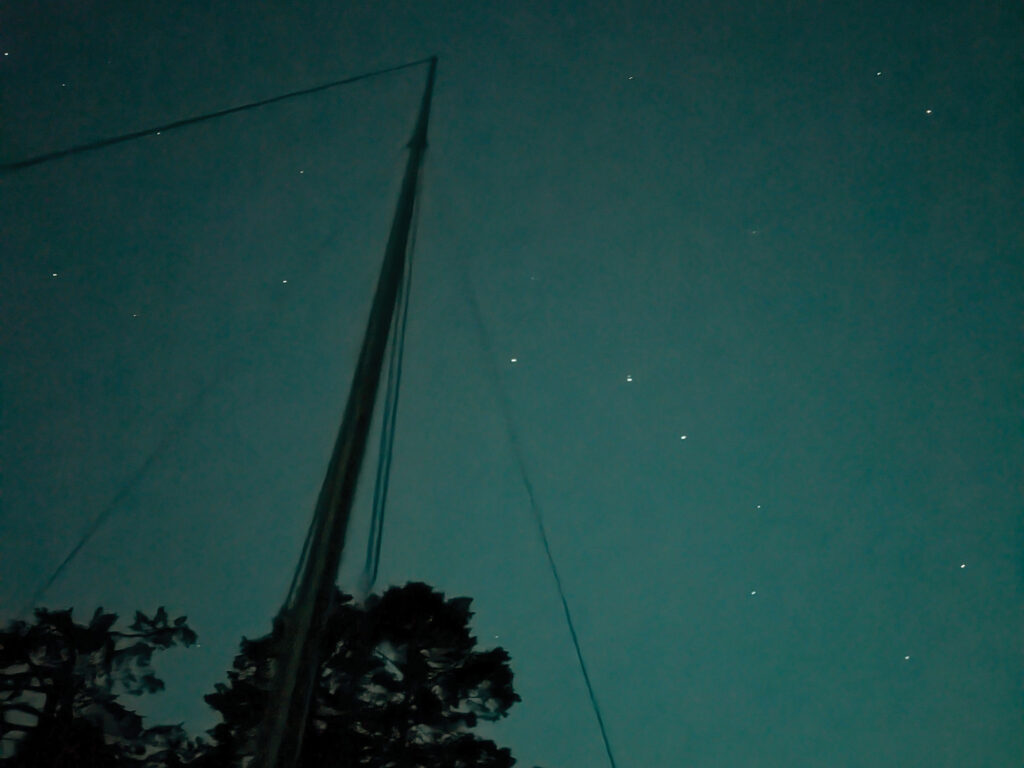
Knowing that it couldn’t last long, I was raising Lazydog’s sails within an hour and shouting my goodbyes to some of the rowers who watched me depart from the cliffs. I put the far-off industrial docks of Fairhaven right on the bow for a tight reach course across the bay. After an hour of productive progress yet halfway from anywhere, the sails finally slackened with the dying breeze. It was still only midmorning, so I lounged on the aft deck, propped up by some flotation cushions.
Sure enough, after around an hour of waiting, a timid southerly began to press northward toward downtown Bellingham. Its shifty 3 to 5 knots proved sufficient to propel me the last few miles toward home. Around noon, I doused Lazydog’s sails to coast the final few feet into Fairhaven’s public dock, pleased to have completed the 44-nautical-mile cruise without having to reinvigorate the blisters acquired on day one.
As I doused Lazydog with the launch ramp’s freshwater hose, four days’ worth of salt and sand washed back toward the bay. I drove home knowing that it would all be returning to the varnished coaming and floorboards at least once more before the summer was out.
Sean Grealish, a master’s student in environmental science at Western Washington University, studies estuary restoration in Bellingham. He’s a seasoned racer with two Transpacs and an R2AK finish, and he enjoys cruising the San Juans on his family’s Lazydog.

